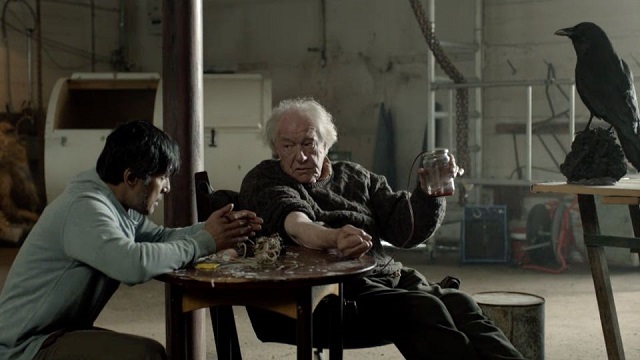
Let The Fire Burn
USA, 2013
Directed by Jason Osder
In 1985, a confrontation occurred in a West Philadelphia neighborhood between the Philadelphia police and an activist group that called itself MOVE. By the conclusion of the incident, a fire had broken out that destroyed several blocks’ worth of residential homes. Eleven people died.
These are the facts of the incident, but the city of Philadelphia had to set up a massive commission and investigation to uncover the reasons why. Every moment of the commission’s public hearings was videotaped for posterity, but it was not until now that the entire video archive of the incident could be collected by George Washington University. Director Jason Osder has turned that footage into a film titled Let The Fire Burn, and other directors will be hard-pressed to produce a better documentary this year.
The ire between MOVE and the Philly police actually went back several years, back into the late 1970s and the administration of Mayor Frank Rizzo. Let The Fire Burn documents it all, from a fistfight that erupted at the first MOVE compound and allegedly led to the death of a small child, to the eviction of MOVE from that compound, during which a police officer was killed and unarmed members of MOVE were kicked and beaten by police. It is an exhaustive record that establishes well the vile atmosphere between MOVE and the cops: each had ample reason to hate the other, and the cycle of violence only escalated over the years.
It’s important to note that the fault comes from both sides, and Osder does not omit the footage which might make the members of MOVE appear at fault. One of the most tragic ironies of the fire destroying the entire neighborhood is that the entire neighborhood hated MOVE and wanted them evicted, which is fully documented here. Two surviving MOVE members who testified for the commission do themselves no favors: when one is asked whether her brother was the founder of MOVE, her nonsensical answer, which circles back again and again to the phrase “my brother was my brother,” leaves everyone in the room nonplussed. Worse still is MOVE’s own promotional video, which shows very young children in the compound with their bellies distended into the pregnant-looking shape caused by extreme malnourishment; “Their bellies are so big because they eat so much,” a MOVE spokesman proclaims.
Thus was created a toxic relationship between the Philly police and MOVE, for no other reason than because MOVE was clueless, contrary, and confrontational, and the police wouldn’t stand for it. That is the tragic failing of the city of Philadelphia which this film wishes to document: the city became too obsessed with “winning” the conflict with MOVE, until even the safety of the city’s population was secondary. No one ever admits as much on the stand during the commission hearings, but no one needs to: the truly impressive part of this film is the way in which it allows the subjects to condemn themselves via guilty silences.
It might be said that Let The Fire Burn is a victory of editing rather than filmmaking; after all, no original footage was shot by Osder. But the proper director’s eye is still required to edit that footage into a working documentary, and the proper director’s judgment of his audience is required to present an account as unbiased as this one is. This documentary is neither pro-MOVE nor anti-police as much as it is a servant of the public trust, and it uses nothing other than publicly available video to show how that trust was violated.
-Mark Young
The Tribeca Film Festival runs April 17-28. Visit the official website for more information.




